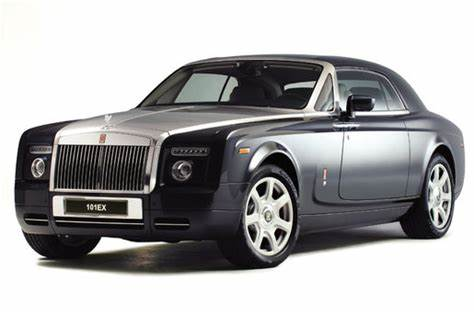Rolls-Royce Share Price: Market Insights

The Rolls-Royce share price is a subject of constant interest for investors, analysts, and anyone with an eye on the global economy. This iconic British engineering company, known for its prowess in aerospace, power systems, and defense, has a complex history and faces a constantly evolving market landscape. Understanding the factors that influence the Rolls-Royce share price requires a deep dive into the company’s operations, its financial performance, and the broader economic context. This article aims to provide a comprehensive overview of the Rolls-Royce share price, exploring its historical trends, the key drivers that affect it, and the challenges and opportunities that lie ahead.
A Historical Perspective: Tracing the Trajectory of Rolls-Royce Shares
The Rolls-Royce share price has experienced significant fluctuations over the years, reflecting the company’s own journey through periods of growth, restructuring, and unforeseen challenges. From its early days as a luxury car manufacturer to its current focus on power systems and aerospace, Rolls-Royce has undergone significant transformations. These changes have inevitably impacted the value of its shares. Analyzing the historical share price data provides valuable insights into the long-term trends and the cyclical nature of the company’s performance. Understanding these historical patterns can help investors make more informed decisions about the future.
Key Drivers of the Rolls-Royce Share Price: Unraveling the Complexities
Several key factors influence the Rolls-Royce share price, making it a complex and dynamic variable. These drivers can be broadly categorized into company-specific factors and macroeconomic factors.
Company-Specific Factors:
Financial Performance: The most significant driver of the share price is the company’s financial performance. Factors such as revenue, profitability, cash flow, and debt levels all play a crucial role. Strong financial results typically lead to an increase in investor confidence and a rise in the share price. Conversely, disappointing results can trigger a decline.
Order Book and Contracts: Rolls-Royce’s order book, particularly in its civil aerospace division, is a key indicator of future revenue and profitability. Large contracts for engines or power systems can significantly boost investor sentiment and drive up the share price. Conversely, a decline in new orders can have a negative impact.
Operational Performance: The company’s operational efficiency, including its ability to manage costs, deliver projects on time, and maintain high levels of product quality, is crucial for its financial performance and, consequently, its share price. Operational challenges, such as
production delays or quality issues can negatively affect investor confidence.
Research and Development: Rolls-Royce invests heavily in research and development, particularly in areas such as sustainable aviation and advanced power systems. Successful innovation and the development of new technologies can enhance the company’s competitive advantage and drive long-term growth, positively impacting the share price.
Strategic Decisions: Major strategic decisions, such as mergers, acquisitions, divestitures, or restructuring initiatives, can significantly impact the share price. These decisions can signal a change in the company’s direction and can either boost or dampen investor confidence.
Macroeconomic Factors:
Global Economic Growth: The overall health of the global economy plays a significant role in the performance of Rolls-Royce shares. Economic downturns can lead to reduced demand for the company’s products and services, particularly in the civil aerospace sector, which is highly cyclical.
Interest Rates: Changes in interest rates can affect the cost of borrowing for Rolls-Royce and can also influence investor sentiment. Higher interest rates can make it more expensive for the company to finance its operations and can also make other investments more attractive relative to equities.
Currency Exchange Rates: As a global company with significant international operations, Rolls-Royce’s financial performance is affected by fluctuations in currency exchange rates. Changes in exchange rates can impact the value of its revenues and expenses, which can, in turn, affect the share price.
Geopolitical Events: Geopolitical events, such as political instability, trade wars, or global crises, can create uncertainty and volatility in the markets, impacting the Rolls-Royce share price. These events can disrupt supply chains, affect demand for the company’s products, and create a general sense of risk aversion among investors.
Commodity Prices: The price of key commodities, such as oil and metals, can affect Rolls-Royce’s input costs and can also influence demand for its products. For example, rising oil prices can make air travel more expensive, which could impact demand for civil aerospace engines.

Challenges and Opportunities: Navigating the Future
Rolls-Royce faces a range of challenges and opportunities in the current market environment.
Challenges:
Debt Levels: The company has faced challenges with high debt levels, which can constrain its financial flexibility and impact investor sentiment.
Competition: Rolls-Royce faces intense competition from other major players in its key markets, requiring it to constantly innovate and improve its products and services.
Technological Disruption: The rapid pace of technological change presents both a challenge and an opportunity. The company needs to adapt to new technologies and invest in research and development to remain competitive.
Sustainability: The increasing focus on sustainability and reducing carbon emissions is creating pressure on the aerospace industry to develop more environmentally friendly technologies. Rolls-Royce is investing in sustainable aviation fuels and electric propulsion systems to address this challenge.
Opportunities:
Growth in Emerging Markets: The growing middle class in emerging markets is driving demand for air travel and power systems, creating opportunities for Rolls-Royce to expand its business.
Sustainable Aviation: The transition to sustainable aviation fuels and electric propulsion systems presents a significant opportunity for Rolls-Royce to become a leader in this emerging field.
Defense Spending: Increased defense spending in many countries is creating opportunities for the company’s defense business.
Power Systems: Rolls-Royce’s power systems business, which provides engines for marine, nuclear, and other applications, has the potential for growth in various sectors.
Analyzing the Share Price: Tools and Techniques
Investors use various tools and techniques to analyze the Rolls-Royce share price and make investment decisions. Fundamental analysis involves examining the company’s financial statements, its business prospects, and the overall economic environment. Technical analysis uses historical share price data and charting techniques to identify trends and patterns. Investors also pay close attention to news and events related to the company and the industries in which it operates.
The Importance of Due Diligence: Making Informed Investment Decisions
Investing in the stock market always involves risk, and it is essential to conduct thorough due diligence before making any investment decisions. Investors should carefully research the company, understand the factors that influence its share price, and consider their own investment goals and risk tolerance. It’s also advisable to consult with a financial advisor before making any investment decisions.
FAQs
What factors affect the Rolls-Royce share price?
The Rolls-Royce share price is influenced by a combination of factors, including the company’s financial performance, developments in the aerospace and automotive industries, global economic conditions, and investor sentiment. For Rolls-Royce, significant factors such as changes in aviation demand, engine sales, the performance of its defense and power systems sectors, and fluctuations in fuel prices play a critical role in driving its stock price. Additionally, geopolitical factors and the company’s strategic initiatives can affect how the market perceives its future growth prospects.
Has the Rolls-Royce share price been volatile?
Yes, Rolls-Royce’s share price has shown significant volatility, especially in recent years. The company has been hit by global challenges such as the COVID-19 pandemic, which severely impacted the airline industry and, in turn, the demand for Rolls-Royce engines. However, volatility can also present opportunities for investors, as market fluctuations can lead to both gains and losses. Long-term investors in Rolls-Royce, however, are often looking at the company’s ability to recover from these setbacks and its position in global markets.
What is the long-term outlook for Rolls-Royce share price?
The long-term outlook for Rolls-Royce’s share price largely depends on the company’s ability to capitalize on recovery in the aerospace and aviation sectors, particularly as air travel rebounds globally. Furthermore, the company’s success in transitioning toward sustainable energy technologies and expanding its defense and power systems sectors will be crucial in driving long-term growth. Analysts often see the share price as a reflection of the company’s ability to diversify its revenue streams and adapt to a changing global landscape, especially regarding green technologies.
In summary
The Rolls-Royce share price is influenced by a complex interplay of company-specific and macroeconomic factors. It is essential for investors to comprehend these elements in order to make wise choices. While the company faces challenges, it also has significant opportunities for growth in various sectors. By carefully analyzing the company’s performance, the market environment, and the long-term trends, investors can gain a better understanding of the potential risks and rewards associated with investing in Rolls-Royce shares. The company’s future success will depend on its ability to navigate the challenges, capitalize on the opportunities, and continue to innovate in its chosen fields.
To read more, Click here


Leave a Comment